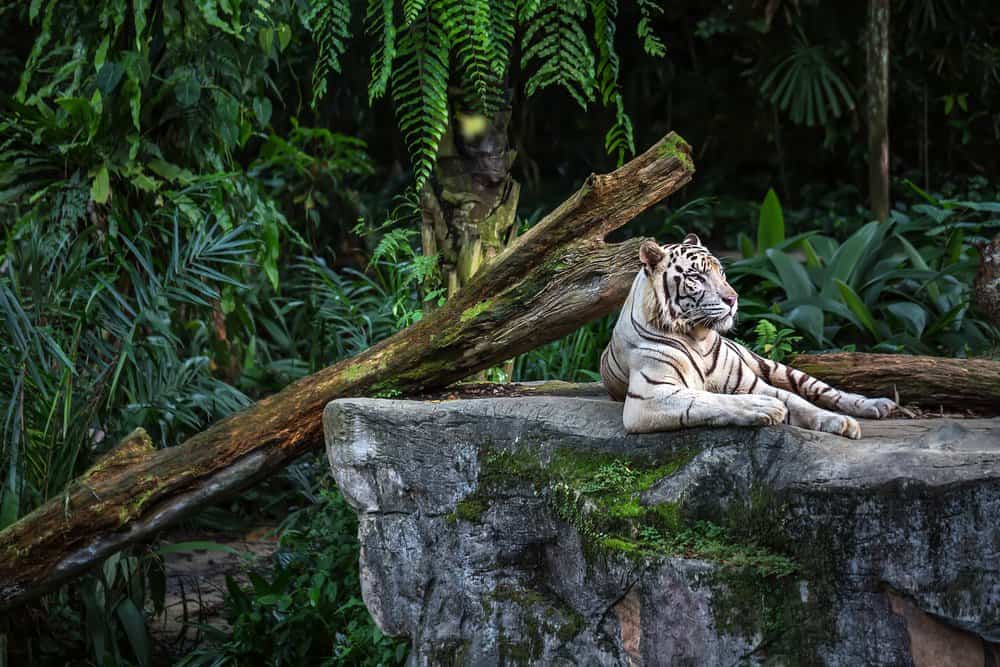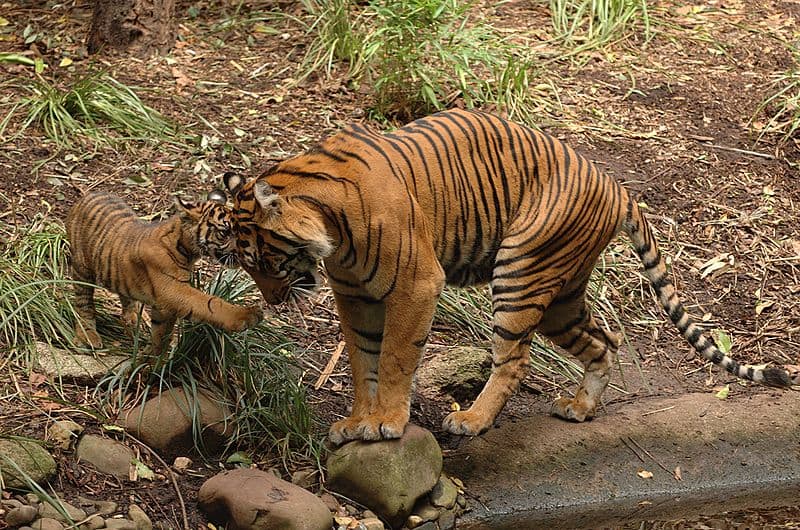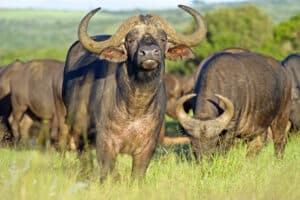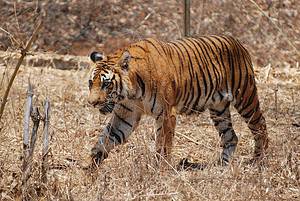
Tigers are a popular animal in mythology and pop culture. The very pattern of their fur strikes awe in people worldwide. These big bulky cats have been a pillar of Asian culture for centuries. People go as far as to revere them for their strength and agility. However, one place where tigers do not have any meaningful symbolism is with the Native American, Indigenous, and First Nations peoples of North America.
What Is a Spirit Animal? Can My Spirit Animal Be a Tiger?
To put it in simple terms, your spirit animal cannot be a tiger. This is because spirit animals, as we understand them, come from the cultures of Native American peoples. The tiger would not have been included in Native American lore due to its non-presence in North America. As such, it cannot be your spirit animal.
When looking at the cultural customs regarding spirit animals in North America, we see that many people’s perception of what a spirit animal is tends to be erroneous. For example, people often believe that spirit animals represent who they are on the inside. Still, to the Native American people, this could not be further from the truth.
The Native American and Indigenous people of North America believe that spirit animals are messengers, guides, and teachers. These spirits choose to appear to people as animals to help guide them through life. You are also not limited to just one spirit animal. Many animal spirits may visit you throughout life to guide you through different times. As a result, the nature of your spirit animal doesn’t say anything about you in particular.
However, there is a general meaning to dreaming about certain spirits. For instance, hawks are often regarded as signs of an enemy approaching. So, if a hawk spirit suddenly appears to guide you, you might be warier of people you consider your enemies than you were before.

With no presence in North America, tigers would not have symbolism to the Indigenous peoples of North America.
©bezikus/Shutterstock.com
What Does the Tiger Symbolize Outside of North America?
Tigers are native to Asia and Siberia. Thus, most of the legends and myths surrounding them come from those regions. Generally speaking, tigers represent strength, cunning, majesty, independence, and immortality. However, there is also a special meaning to white tigers, a unique genetic variant of the Bengal tiger. While humans have historically exploited white tigers and forced them to reproduce incestuously to produce more white tigers, a naturally-born and genetically healthy white tiger is revered in many lands.
Where many Western cultures vaguely revere the lion as the king of the beasts, Eastern cultures and Siberians typically revere the tiger as the king of beasts. This is because Eastern cultures had no early exposure to lions that would make them revere them. So in many ways, it’s possible.

Outside of North America, tigers are prominent symbols throughout the world.
©iStock.com/Ondrej Prosicky
Tiger Symbolism in Asia
Tigers have an immense breadth of symbolism and mythology in Asia, where they are native. The lunar calendar uses the tiger as one of the twelve zodiac animals representing ferocity and strength. He inspires awe in the other zodiac members. Tigers also have specific mythology in different regions of Asia.
China
One of the most significant sources of tiger mythology and worship is China. With 5,000 years of history, most of which was spent revering tigers, even if only in the background of their other beliefs, there are many amazing stories and legends regarding tigers.
For starters, the Chinese believe that an animal spirit rules each direction on the compass. The White Tiger rules the western part of the world and its direction on the compass. The tiger also presides over the autumn season in China, with people believing that the tiger comes down to bless villages and cities in autumn. The tiger is personified by the Orion constellation, which is easy to see from China during autumn.
Other tiger symbolism involves Tsai Shen Yeh, the God of Wealth in China. Tsai Shen Yeh is typically pictured riding a black tiger with a golden yuan bao — an ancient type of currency in Chinese traditions.
Chinese people consider the tiger one of four superintelligent creatures, on par in intelligence with humans and with mystical powers beyond that of humankind. These four animals are the tiger, the dragon, the tortoise, and the phoenix.
Going into Chinese folklore, we see the tiger as a pillar of justice. Many folklore stories tell of tigers that kill evil people and protect the good. The tiger is a harbinger of good luck and wealth and a protector of all things good.
In Southern China, people worship the White Tiger on his birthday. This is because the White Tiger’s birthday is the second moon of the lunar calendar, or March 6 in the West. In the East, the date changes yearly, as the lunar calendar is not fixed, like the Julian calendar.
Additionally, Chinese myths tell of five tigers that balance the energies of the cosmos. These tigers come in different colors. The white, blue, black, and red tigers represent the four seasons and the four elemental energies. The yellow tiger is the supreme ruler of the tigers, overseeing all the other tigers as they balance the energies of the world.
Korea
According to legend, the first Korean myth regarding tigers is the myth of Dangun, the founder of Gojoseon. According to the full myth, a tiger and bear desired to become human beings. The bear succeeded in her goal of becoming a human woman by eating nothing but mugwort and garlic for 100 days. However, the tiger could not endure this diet and did not achieve his goals.
The records left behind by the Joseon Dynasty contain some 635 records of tigers. The myths also begin with real life, such as the Sansindo painting depicting the guardian of a mountain leaning on or riding a tiger. The tiger was also considered a messenger and errand runner for the mountain’s guardian.
Japan
One of the most prominent Japanese myths relating to tigers is that of the Gokotai-Yoshimitsu, a tanto dagger wielded by a Japanese envoy with no name. He was sent to Ming China, where he and his men found themselves surrounded by five tigers. In a panic, the envoy drew Gokotai-Yoshimitsu and began to wave it around like a maniac. While it may seem unseemly, it worked, and the tigers backed off.
Vietnam
Tiger worship is pretty common in Vietnam as well. Vietnamese villages often have temples dedicated to the tiger. They also adorn their temples with tiger statues to keep evil spirits from invading their sacred spaces.
Vietnam’s tiger worship likely began out of fear. Records show that tigers sometimes raided early Vietnamese settlements, making people fearful and respectful of the animals. This fear and respect eventually morphed into reverence and became the backbone of tiger worship in Vietnam.
India
India is also known for its tiger worship. These animals hold significant positions of power within the Hindu and Buddhist traditions, and the people revere them, though not as much as they do cows. The tiger is associated with the Hindu deities Shiva and Durga, specifically.
Final Thoughts
Tigers are awe-inspiring creatures with immense strength and physical prowess. So, it makes sense that the people who lived around them would come to respect and revere the tiger for its strength and intelligence, hoping that these creatures would come to protect them from the world’s evils.
Once again, we want to reiterate that tigers cannot be considered “Spirit Animals” as this concept is a unique cultural zeitgeist for the North American Indigenous people. We ask that you respect our Indigenous friends by not adopting their customs into your daily life without specific guidance from Indigenous people. We also ask that you not appropriate their culture by misapplying it to animals that would not be included in their cultures.

Where applicable, tigers are revered for their strength.
©Ghouston 10:12, 16 May 2007 (UTC), CC0, via Wikimedia Commons – License
Disclaimer
This article’s writer is not of Native American, Indigenous, or First Nations heritage. Therefore, this article does not represent an authoritative source on Native American cultures. While the author may not be Indigenous, we have done our best to source and elevate Indigenous voices on the topic of spirit animals. However, this article remains to be for entertainment and educational purposes only. Therefore, it should not be treated as a definitive source.
Additionally, A-Z Animals does not promote or condone the adoption of spirit animals and clans into the lives of non-Native American people. Spirit animals and their clans are a cultural zeitgeist of the Native American people. We ask that you listen and hear their words when they ask you not to appropriate this concept into your life without guidance from a Native American person.
The photo featured at the top of this post is © apiguide/Shutterstock.com
FAQs (Frequently Asked Questions)
What is a spirit animal?
Spirit animals are a type of spirit that appears to you as an animal to help guide you through life or pass a message onto you. You are not limited to one spirit animal; many may visit you throughout your life.
Where do spirit animals come from?
The concept we know as spirit animals originates from the Native American and Indigenous populations of North America.
Can my spirit animal be a tiger?
Since Native Americans would not have seen a tiger in the wild, it can be considered offensive to refer to tigers as your “spirit animal” since they would not be part of the Native American cultures.
Where are tigers native to?
Tigers are native to Asia and Siberia.
What do tigers symbolize?
Tigers symbolize strength, intelligence, majesty, protection from evil, and good luck.
Thank you for reading! Have some feedback for us? Contact the AZ Animals editorial team.






